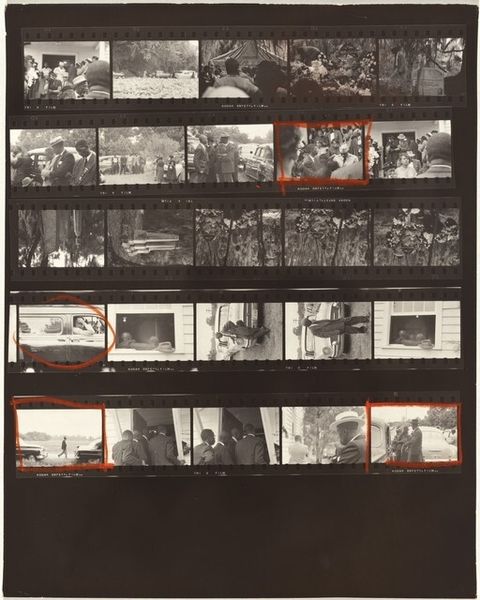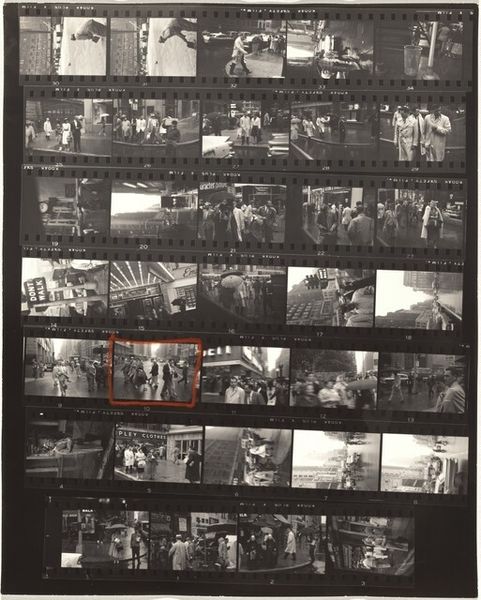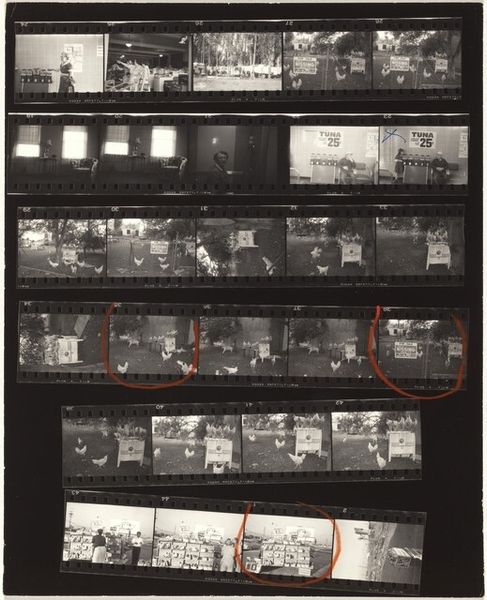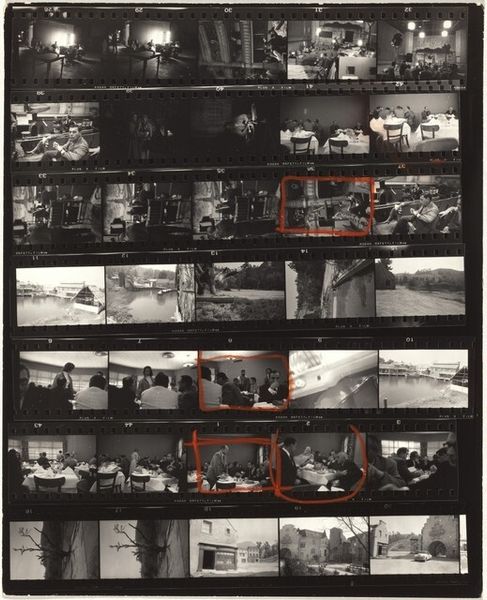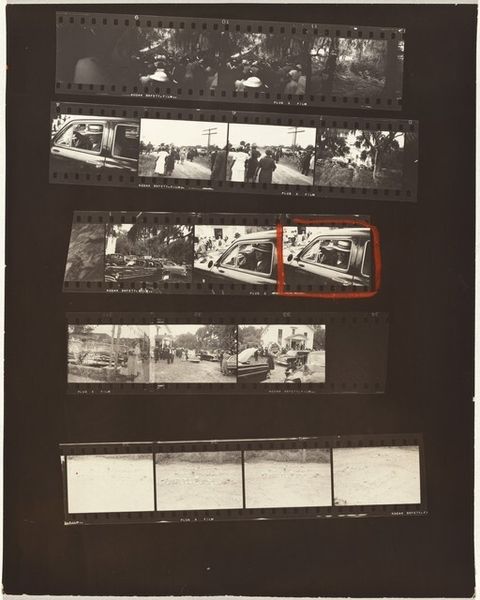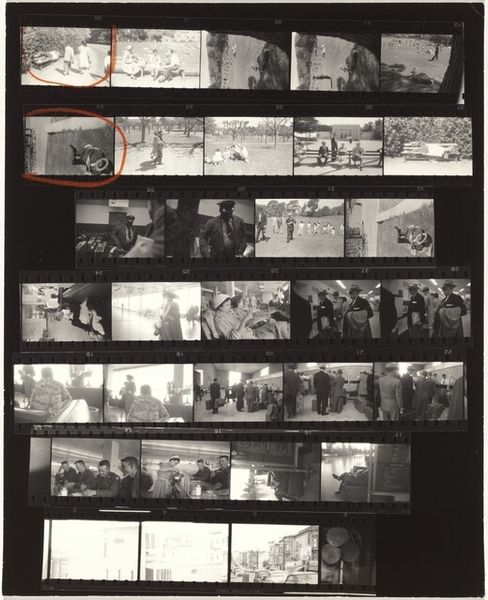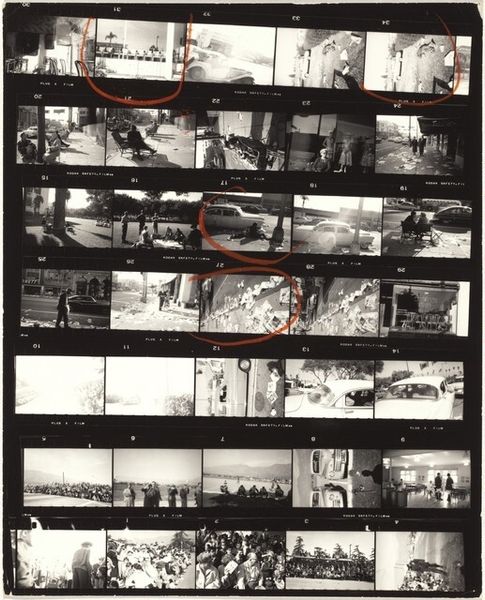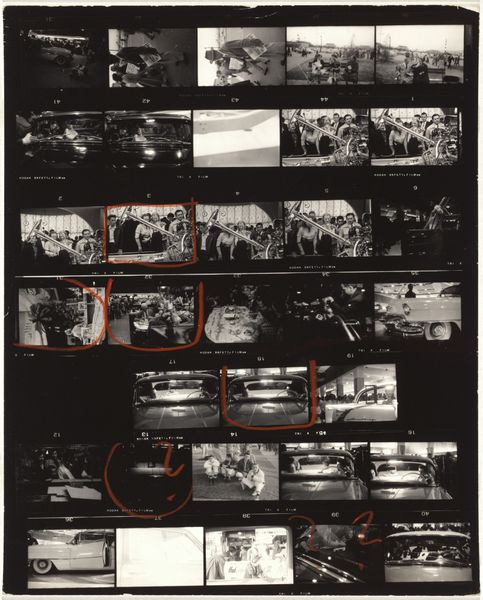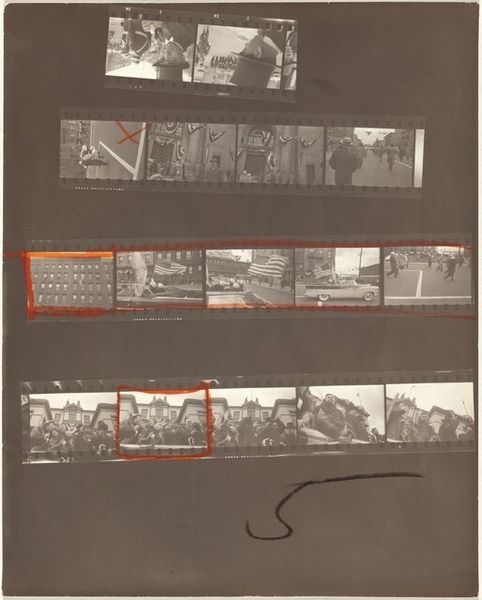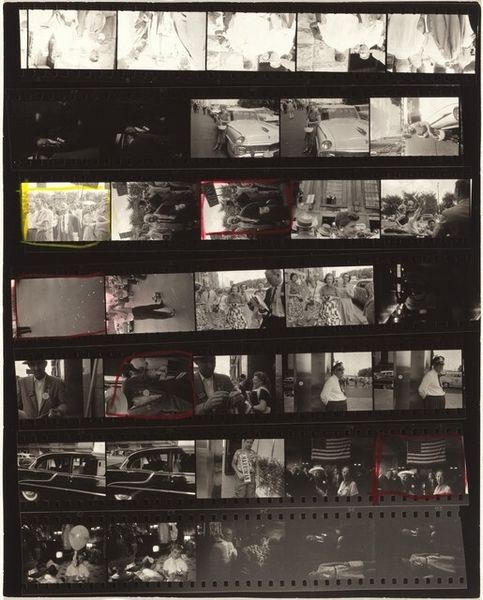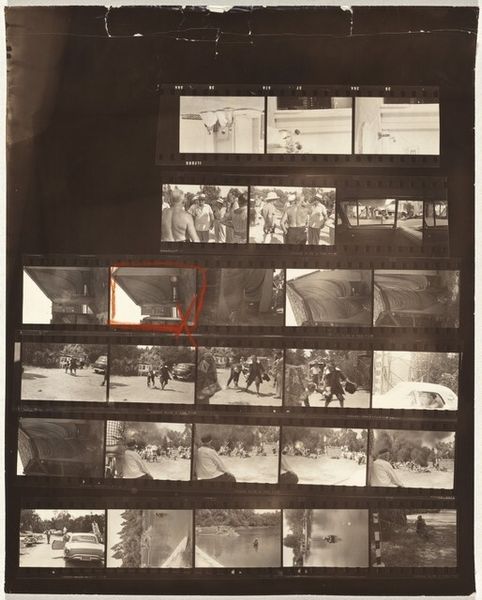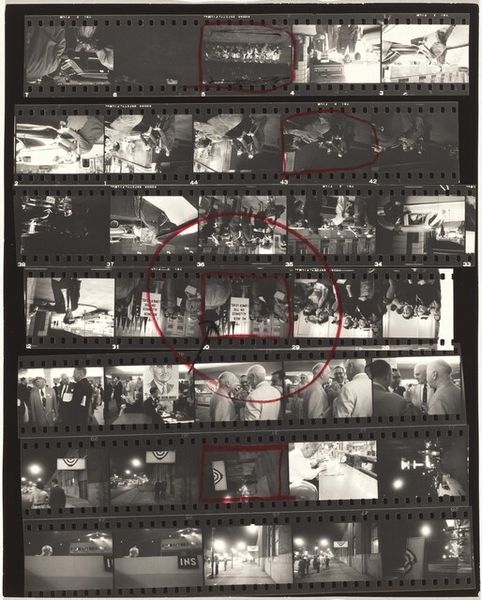
photography, gelatin-silver-print
portrait
landscape
street-photography
photography
gelatin-silver-print
realism
Dimensions: overall: 25.3 x 20.2 cm (9 15/16 x 7 15/16 in.)
Copyright: National Gallery of Art: CC0 1.0
Curator: Robert Frank captured this contact sheet, entitled "Guggenheim 5—McClellanville, South Carolina" in 1955. It's a gelatin silver print, offering us a glimpse into his photographic process. What strikes you first? Editor: The layers! It's like peeking behind the curtain of Frank's mind. These aren't finished artworks, but raw glimpses. It's moody, grainy, honest... Almost feels voyeuristic, doesn't it? Curator: Exactly. These contact sheets were not meant for public consumption, offering unprecedented insight into Frank's selection and editing methods during his Guggenheim Fellowship years. Consider that the American social landscape served as his subject during that period. Editor: You're right, there's a narrative unfolding here. We see what might be a community gathering, boats, houses, portraits. The marked frames imply their significance for Frank. Like he's underlining… highlighting certain moments or people. Curator: His methodology certainly had a profound impact. By revealing what others excluded, such as apparent mistakes, imperfections, and discarded takes, Frank made a notable move toward representing photography as it existed beyond a mere form of documentation or as aesthetic form. Editor: I get the sense of fleeting moments—snapshots that suggest untold stories of a specific town. Like he wasn't just taking photos; he was attempting to preserve a fading era or uncover a complex narrative beneath the surface. Curator: And those stark contrasts in grayscale—it’s not about pretty pictures. The way the subjects look directly, almost confronting the viewer with realities of 1950s America… particularly when considering its context within a society fraught with racial tension and stark inequalities. Editor: Absolutely. It feels like an intrusion, yet also vulnerable. Those grainy shadows, the off-kilter framing, make it even more real, not polished at all. It almost invites the viewer to piece things together, to engage in its own unique way. Curator: In retrospect, this presentation highlights the artistic construction of reality and representation through editing and recontextualization as critical aspects of photojournalistic production. It encourages a reflection of documentary methods for photographic series of the time. Editor: Looking at the overall organization and process... there's freedom in Frank's approach here. As though capturing images and arranging film was like composing lines for free verse. Honest, revealing, rough, poetic. Curator: I concur. It grants us the capacity to comprehend better both Robert Frank's methodology and photography in that era in addition to broader aspects pertaining the art and image-making as documentary practices within artistic, museum, and socio-historical institutions.
Comments
No comments
Be the first to comment and join the conversation on the ultimate creative platform.

